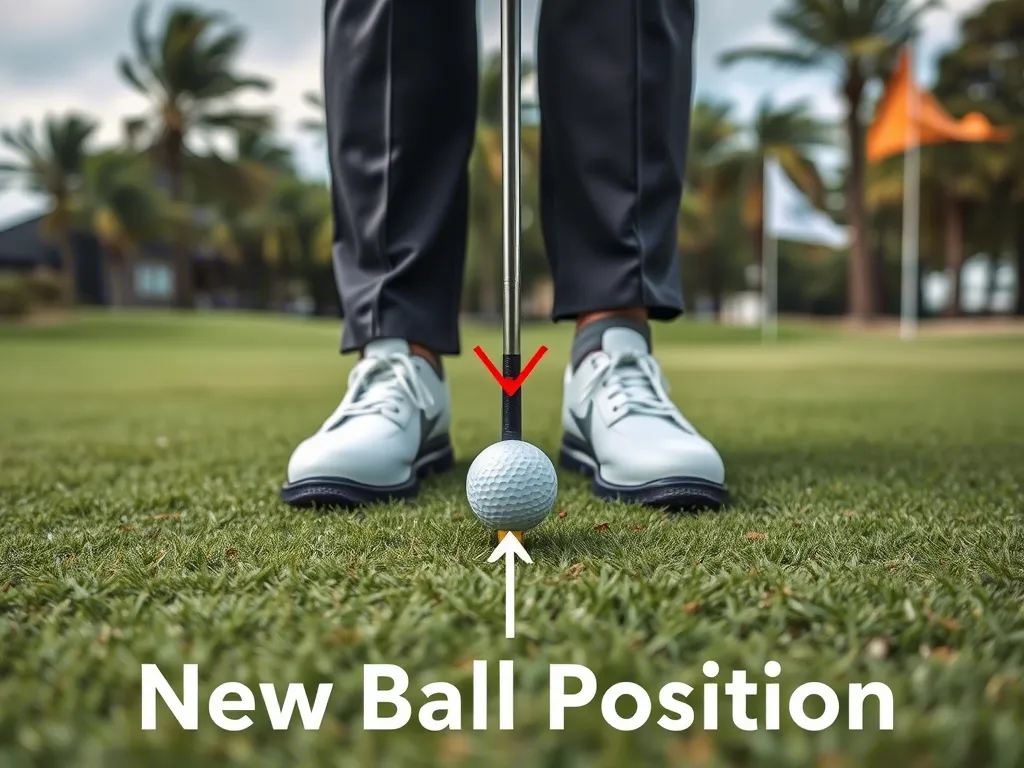How Much Wind Is Too Much For Golf: Pro Tips to Handle Windy Rounds
Most golfers start having trouble when the wind reaches 20 miles per hour. In most cases, anything over 30 mph can make golf nearly unplayable, especially for beginners. But don’t worry, you don’t have to cancel your round just yet.The ball might not fly straight, and it’s harder to guess how far it will go.
To play better in windy weather, try using a low-spin golf ball like the Titleist AVX, swing softer, and hit the ball lower. A tool like the Garmin Z82 can also help you check the wind and choose the right club.
But if the wind goes over 30 miles per hour, it’s often best to wait for a calmer day. It’s safer and more fun that way.
In this guide, you’ll learn about how much wind is too much for golf to play safely.

How Wind Affects Your Golf Game: Ball Flight, Distance, and Club Control Explained
Wind can change how you play golf in a big way. It doesn’t just move the trees. It can move your golf ball too. Even a small breeze can affect how far the ball goes, what direction it travels, and what club you need to use.
If the wind is stronger, hitting accurate shots and controlling the ball becomes harder.
To help you understand what to expect, here’s a simple chart that shows how different wind speeds can affect your game:
Golf Wind Speed Effects Details Chart Table
| Wind Speed (mph) | What Happens on the Course |
| 0–10 mph | Barely noticeable. You can play your normal game. No big changes needed. |
| 10–20 mph | The ball may drift slightly. You might need to aim a little left or right. Choose clubs carefully. |
| 20–30 mph | Big changes in ball flight. You may lose distance (up to 30 yards). Use lower shots and stronger clubs. |
| 30+ mph | Very hard to play. Shots are unpredictable. It may be best to cancel or wait for calmer weather. |
Note: When wind speeds go above 25–30 mph, even professional golfers have a tough time. The ball can curve more, lose distance, or get pushed off target.
Your shots may fly too high, go sideways, or fall short. In strong wind, smart golfers use low-spin golf balls, take shorter swings, and hit the ball lower to stay in control. If it’s too windy and unsafe, it’s okay to take a break and try again another day.
With the right gear and a few smart changes to your game, you can still enjoy golf even on windy days.

Best Tips for Playing Golf in Windy Weather: How to Hit Better Shots and Stay in Control
Playing golf on a windy day isn’t easy, but it’s not impossible. With a few smart changes to your swing and setup, you can keep your shots straight and make the game more fun. Here are some simple tips to help you play better when the wind picks up.
Use a Shorter Swing to Keep the Ball Low in the Wind on Windy Golf Courses
Big swings can send the ball too high, where the wind can push it off course. Try a three-quarter swing instead. This shorter swing helps you keep the ball flight low, making it less likely to drift or lose distance.
Choose a Low-Spin Golf Ball for Better Wind Control in Headwind Conditions
Low-spin golf balls are more stable in the air and don’t curve as much in crosswinds or headwinds. Balls like the Titleist AVX or Bridgestone Tour B RX are great choices for windy days because they fly straighter and fight the wind better.
Aim Left or Right to Adjust for Crosswind Direction and Control Ball Flight
When the wind is blowing across the course, your ball might drift. For example, a right-to-left wind (a crosswind) can push your ball to the left.
Aim into the wind to keep your shot on target. This is called playing the wind, and it’s something pro golfers do all the time.
Use One More Golf Club When Hitting Into a Headwind for Better Control
Headwinds can make your ball stop short. To help the ball go farther, use one more club than usual (for example, use a 6-iron instead of a 7-iron).
On the other hand, when hitting with a tailwind behind you, use one less club so you don’t overshoot the target.

Move the Ball Slightly Back in Your Stance for Windy Shots
Placing the ball a little farther back in your stance helps you hit it lower. This keeps the launch angle down and makes it easier to fight the wind. It also gives you more control over the shot.
Watch Flags, Trees, and Grass to Read Wind Speed and Direction
Before every shot, look around the course. Flags, trees, and moving grass can tell you where the wind is coming from and how strong it is. Some golfers even throw a bit of grass in the air to feel the wind direction.
Pro Tip:
You can also use a wind meter or a rangefinder with wind data, like the Garmin Approach Z82, to get accurate wind readings and adjust your club selection.

What Is Considered Windy in Golf for Beginners and Casual Players
Have you ever played golf on a windy day and felt like the wind was playing against you? You are not alone.
Let’s say one day the wind is light, just 10 mph. You don’t feel much, and your shots go where you want. But when the wind picks up to 20 mph or more, everything changes.
Your ball may fly off to the side or land too short. That’s when wind starts to really affect your game.
Most beginner and casual golfers start to have trouble when the wind gets above 15 to 20 mph.
Professional golfers can handle wind better, but even they know that 30+ mph wind can make the game very hard. The higher the wind, the harder it is to stay in control.
How to Play Golf in Windy Conditions: Simple Tips for Better Control and Distance
Wind can make golf harder. It pushes the ball, shortens your shots, and makes it tough to aim. This guide will show you easy tips to help you stay in control and hit better shots on windy days.
Top Tips for Playing Golf in the Wind: Easy Ways to Keep Shots Straight
Playing golf in the wind doesn’t have to ruin your day. If you make smart choices and small changes, you can still enjoy the game and hit good shots. Here are some easy golf tips for windy weather.
Keep Calm and Focus on Each Shot in Windy Golf Conditions
“After my third ball flew out of bounds, I got mad and nearly gave up. But I learned that staying calm was the only way to get through it.”
Windy days can be tough, but try to stay relaxed. Don’t rush or get upset. Take your time, breathe, and focus on making smart moves. The wind is part of the game.
Swing Easy to Keep the Ball Low and Improve Accuracy
“I used to swing harder in the wind, but that made things worse. When I slowed down and used a smaller swing, my shots stayed straighter.”
A smooth and shorter swing called a three-quarter swing keeps the ball flight low, helping it go straighter in the wind.
Choose the Right Golf Club for Windy Conditions
“I had a 140-yard shot into the wind. I used my 8-iron, but the ball fell short. Then I tried my 6-iron, and it landed perfectly.”
When hitting into a headwind, use a stronger club to get more distance. When the wind is behind you (tailwind), use a shorter club to avoid hitting too far.
Stay Balanced During Your Swing in Windy Golf Conditions
“I felt wobbly during my backswing on a windy tee box. My shots kept going left and right.”
To stay stable in the wind, widen your stance and make a shorter backswing. This helps you stay balanced and hit cleaner shots.

Watch the Wind Direction and Aim Smarter for Better Golf Accuracy
“My drives kept going right because I didn’t notice the wind was blowing across me.”
Before every shot, look around. Use flags, trees, or grass movement to read the wind. In a crosswind, aim a little into the wind and let it bring your ball back on line.
Does Wind Affect Putting in Golf and Ball Direction on the Green
“I lined up an 8-foot putt, and it looked perfect but a gust of wind pushed it just to the side.”
Wind doesn’t always affect short putts, but it can move the ball on long putts, especially on open or fast greens. Wind can also dry the greens, making them roll quicker.
Putting Tips in the Wind:
- Keep your putting stroke low and smooth
- Don’t stand too tall keep your balance
- Focus and commit to your line
Golf Wind Speed Effects Table: How Much Wind Affects Your Game
| Wind Speed (mph) | What Happens to the Ball | What You Should Do |
| 0–10 mph | The ball flies normally | No changes needed |
| 10–15 mph | The ball may drift a little | Aim slightly off-center; club as normal |
| 15–20 mph | Ball starts curving; shorter distance | Use one extra club; aim into the wind |
| 20–25 mph | Harder to control; ball may go high or short | Use 1–2 stronger clubs; hit the ball lower |
| 25–30 mph | Wind strongly affects ball; less control | Use low shots, 2 clubs stronger; stay patient |
| 30+ mph | Very hard to play; ball moves too much | Better to stop and wait for calmer weather |
Note: This chart gives simple ideas, but each golfer is different. Try these tips during practice to see what works best for you.
FAQs
Can you play golf in 20 mph wind?
What is considered a windy day in golf?
Does wind affect putting in golf?
Yes, wind can affect putting, especially on longer putts or exposed greens. Even a 10 mph wind can influence the ball’s path, making it important to stay balanced and adjust your aim accordingly.
How much distance do you lose hitting into the wind?
When is it too windy to play golf?
It’s generally considered too windy to play golf when wind speeds exceed 30 mph. At this point, controlling the ball becomes very difficult, and safety concerns may arise due to flying debris or unstable footing.
How does wind affect golf ball flight?
Wind can change the direction and distance of your golf shots. A headwind slows the ball down, reducing distance, while a tailwind can carry the ball further. Crosswinds can push the ball left or right, making accuracy more challenging.
What equipment is best for windy golf conditions?
Using wind-resistant gear, such as windproof jackets and hats, can help you stay comfortable and focused. Choosing the right golf ball, such as low-spin or heavier balls, can also improve your performance. Heavier clubs and hybrid clubs can provide more control and stability in windy conditions.
How can I adjust my swing for windy conditions?
To play effectively in the wind, use a three-quarter swing to keep the ball flight low. Avoid swinging harder, as this can add spin and make the ball more susceptible to wind. Focus on smooth, controlled swings for better accuracy.
Are there any tools to help play golf in the wind?
Yes, devices like the Garmin Approach Z82 rangefinder can provide wind speed and direction information, helping you make informed decisions on club selection and shot strategy.
Final Thoughts:
Most golfers start having trouble when the wind blows around 15 to 20 miles per hour. If it goes over 30 mph, the game becomes very hard to control. But that doesn’t mean you can’t play.
By using the right golf ball, choosing the right club, and keeping your shots low, you can still enjoy your round. Tools like rangefinders that show wind speed can help you make smart choices.
Embrace the challenge, continuously improve your skills, and enjoy the unique experience of playing golf in the wind.
With a little practice and the right gear, windy days can feel less frustrating and more fun.
Top FIVE tips for playing in the wind
Posts References:
How much wind is too much
How to Practice and Play Golf in the Wind